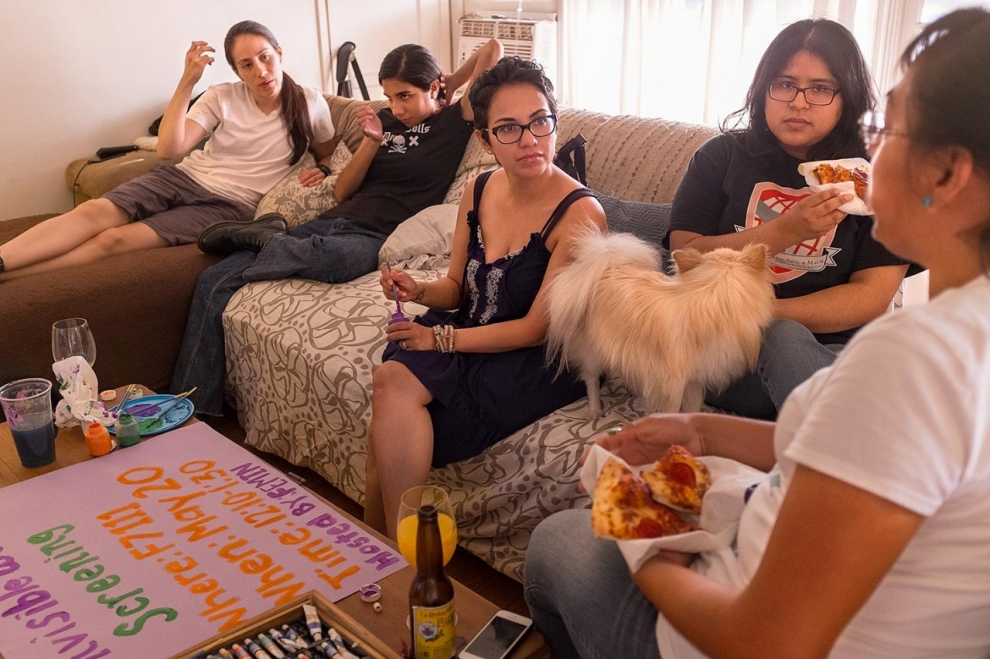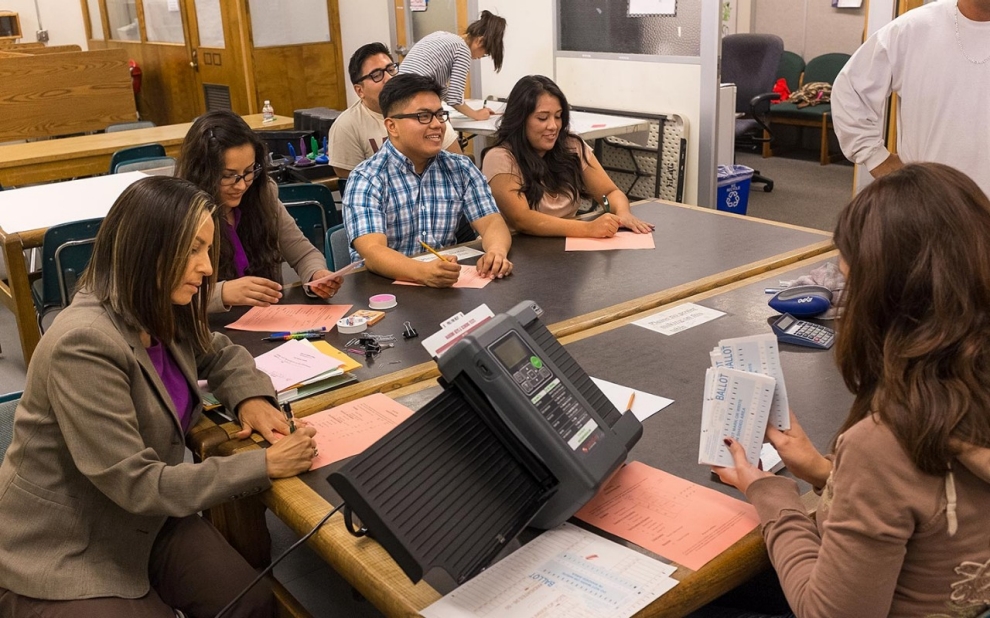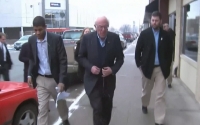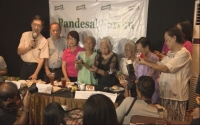“It’s very frustrating,” said Garcia, 26, who was born in Mexico and is undocumented. “There are so many people who have the opportunity to make that difference.”
That includes her wife, Ruiz, who works for an accounting firm and is studying sign-language interpreting. She was born in the U.S. Her mother is a Guatemalan immigrant, and her father a third-generation Mexican-American.
“I’ve become more involved because of her [Garcia],” Ruiz said. “Before, I was thinking my vote doesn’t matter.”
The millennial generation, a powerful wave of close to 90 million teens to 30-somethings, is even more formidable than the aging baby-boom generation. They are America’s newest voters and a populace that could soon redraw the political landscape.
Latinos are another demographic force to be reckoned with.
Some 8 million members of the nation’s largest minority are expected to vote in the November elections — about a third of eligible Latino voters and about 8 percent of all voters — according to projections by the National Association of Latino Elected and Appointed Officials (NALEO).
By the 2016 presidential election, 28 million Latinos will be eligible to vote, up from 25 million currently.
Put the two together, and Latino millennials have the potential to become one of the most influential segments of the electorate.
“It’s always kind of a challenge to engage this population,” said Lizette Escobedo, director of development and communications for Mi Familia Vota, a national organization working to increase Hispanics’ civic participation. “We want to make sure we capture them early on. It’s a challenge but definitely an opportunity.”
Most new voters are millennials, a generation loosely defined as people born from 1982 to 2001. Some classify them as the 78 million 19-to-36-year-olds, putting younger teens in the iGeneration. Either way, millennials outnumber the 76 million baby boomers, a number that is projected to drop to 60 million by 2030, according to the U.S. Census Bureau.
Candidates who can appeal to Latino millennials hit a double jackpot.
Latino Decisions, a Latino political opinion research firm, has identified 44 Republican-held House seats in which Latino voters could influence the outcome in 2014 and beyond. This includes districts where the Latino voting-age population exceeds the 2012 margin of victory and swing districts with big Latino populations won in 2012 by President Barack Obama and House Republican candidates.
If the GOP has a net loss of 17 House seats this year, the Democrats will regain majority control.
Hispanic voters are expected to decide the outcome of 14 GOP-held House seats in districts with large Latino populations and narrow margins of victory in 2012: three in Florida, three in New York, two in California, two in Colorado and one each in Indiana, North Carolina, Nevada and Texas.
“An average 904,000 will turn 18 every year from now until 2028,” said Loren McArthur, deputy director of civic engagement at the National Council of La Raza, the largest national Hispanic civil rights and advocacy group. “That’s another 13.5 million Hispanic voters over that 14 years.”
Another jaw-dropping statistic that should make every politico take notice: Approximately every 30 seconds, a Latino turns 18, and 70 percent automatically have the right to vote because they were born here, according to Mi Familia Vota.
















Error
Sorry, your comment was not saved due to a technical problem. Please try again later or using a different browser.